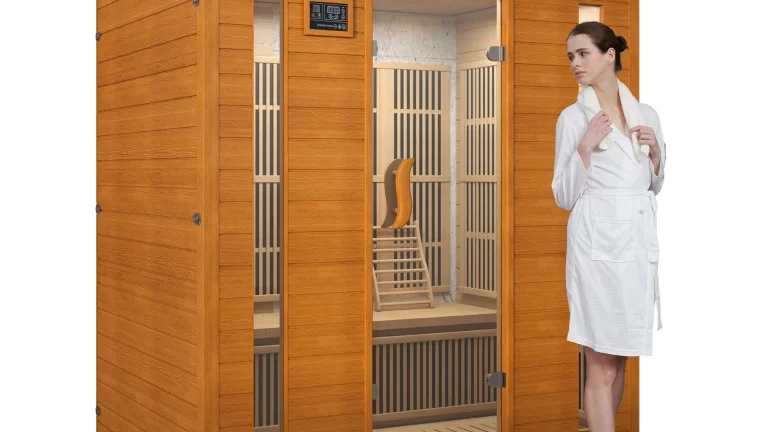If you’re thinking about getting a sauna, one big decision you’ll have to make is whether to go for an indoor sauna or an outdoor sauna. Both have their perks, and the right choice depends on your space, lifestyle, and preferences. So, let’s break it down and see which option works best for you.
1. Convenience and Accessibility
One of the biggest advantages of an indoor sauna for home is easy access. Whether it’s installed in your bathroom, basement, or a spare room, you can enjoy a sauna session anytime without worrying about the weather. Plus, an indoor infrared sauna heats up quickly, so you won’t have to wait long before stepping in.
On the other hand, outdoor saunas create a spa-like experience in your backyard. If you love nature and want to relax under the stars, an outdoor sauna might be the way to go. But keep in mind—you’ll need to step outside to use it, which might not be ideal in extreme weather conditions.
2. Installation and Space Requirements
An indoor sauna infrared setup is generally easier to install. Since it’s inside your home, you don’t have to worry about building a foundation, weatherproofing, or additional electrical work. Most indoor infrared saunas, like those from Real Relax infrared sauna, come in a compact, easy-to-assemble design that fits well in smaller spaces.
Outdoor saunas, however, require a dedicated area in your yard. You may need to prepare a solid foundation and ensure proper electrical wiring, which could mean extra installation costs. But if you have the space, an outdoor sauna can be a stunning addition to your home.
3. Heating Efficiency and Energy Use
When it comes to heating efficiency, indoor infrared saunas are a winner. Since they are inside your home, they don’t have to work as hard to maintain a consistent temperature. They heat up quickly, use less energy, and provide deep, soothing warmth without extreme heat levels.
Outdoor saunas, especially traditional wood-fired or steam saunas, take longer to heat up. They also lose heat more easily, especially in colder weather. If you live in an area with harsh winters, you may find yourself using more energy to keep your sauna warm.
4. Durability and Maintenance
An indoor sauna for home is generally easier to maintain because it’s protected from the elements. There’s no need to worry about rain, snow, or humidity affecting the structure. Infrared saunas, like the Real Relax infrared sauna, require minimal upkeep—just a quick wipe-down after use and occasional air circulation.
Outdoor saunas, on the other hand, require weather-resistant materials and regular maintenance. Wood exteriors may need sealing or staining to prevent damage from moisture, and you’ll need to keep an eye on ventilation to prevent mold buildup.
5. Cost Considerations
Cost is a big factor when choosing between an indoor sauna and an outdoor sauna. An indoor infrared sauna is often more affordable, especially if you choose a pre-built model like the Real Relax infrared sauna. You won’t have to spend extra on outdoor construction, foundations, or weatherproofing.
Outdoor saunas, however, can be more expensive due to additional setup costs. While they add value to your home and create a luxurious retreat, the initial investment is usually higher than an indoor sauna infrared option.
6. Which One Should You Choose?
So, should you go for an indoor sauna for home or an outdoor sauna? Here’s a quick breakdown:
- Choose an indoor infrared sauna if you want easy access, quick heating, lower energy costs, and minimal maintenance.
- Go for an outdoor sauna if you have space, enjoy nature, and don’t mind the extra installation and upkeep.
At the end of the day, both options provide amazing relaxation and health benefits. Whether you pick an indoor sauna infrared setup or a backyard retreat, a sauna is a fantastic investment in your well-being. If you want a high-quality option with easy installation and great performance, a Real Relax infrared sauna is a great place to start!
